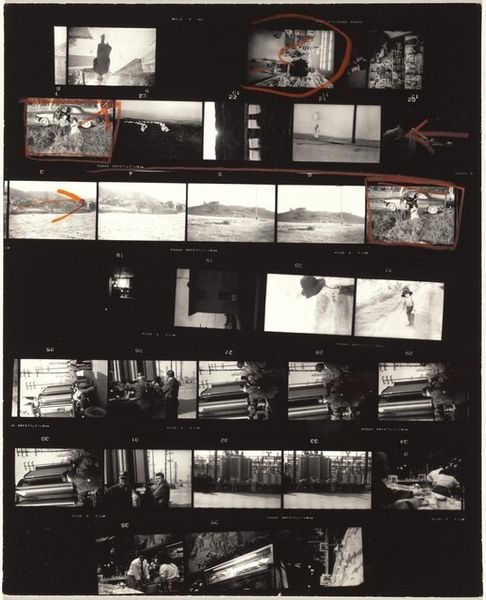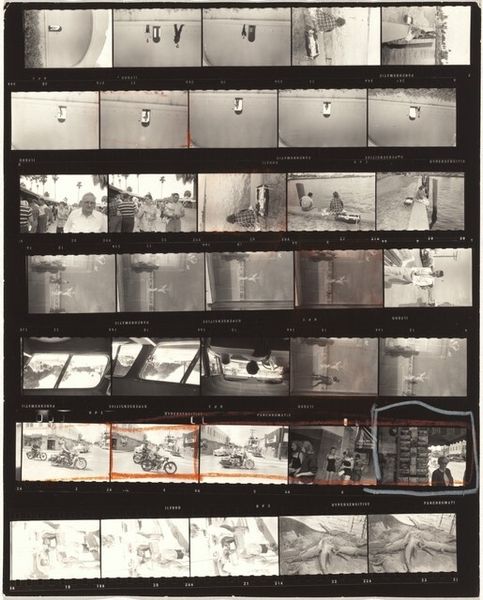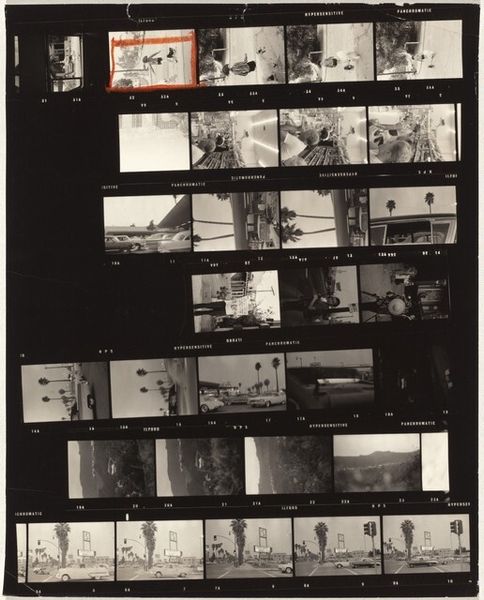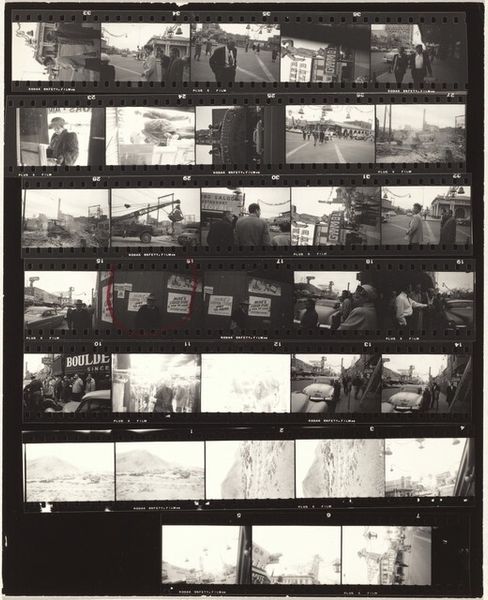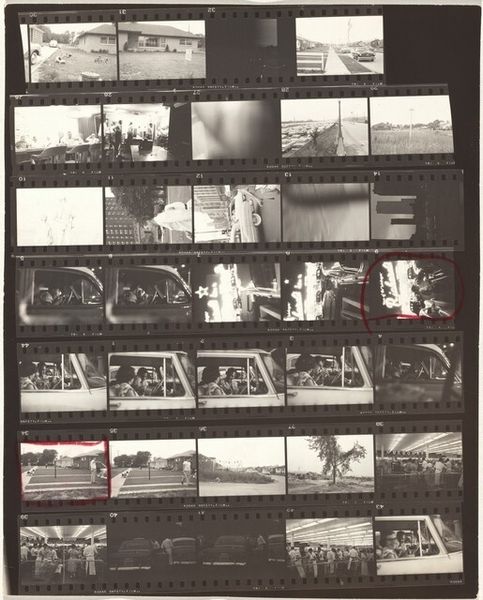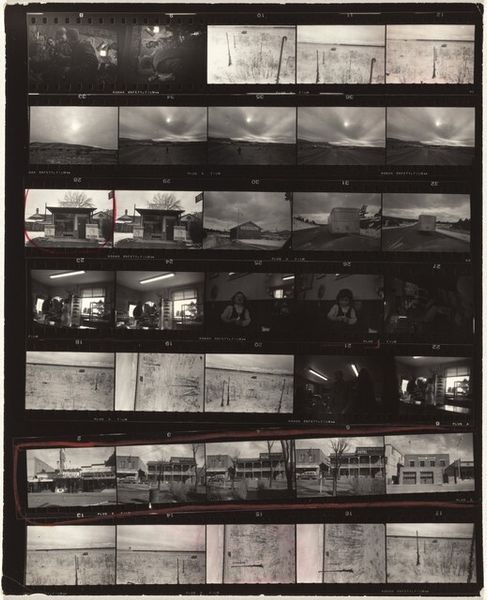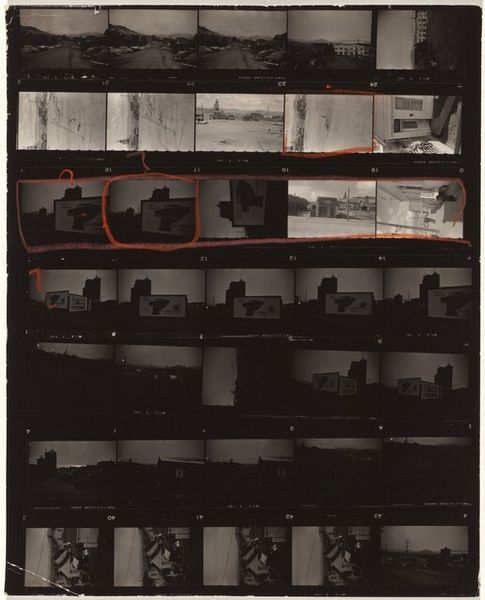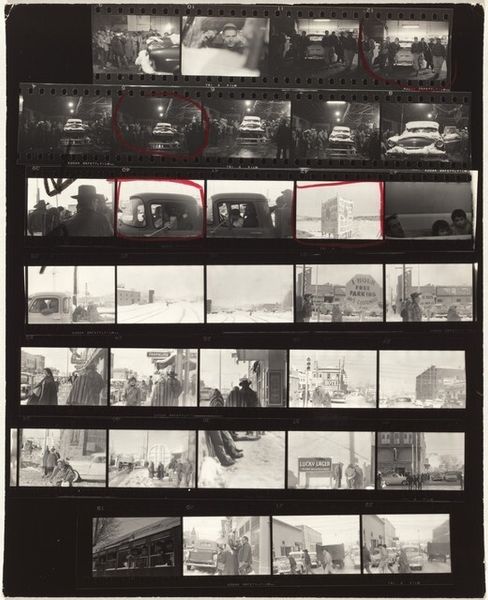
Dimensions: overall: 25.2 x 20.2 cm (9 15/16 x 7 15/16 in.)
Copyright: National Gallery of Art: CC0 1.0
Curator: This is a contact sheet from Robert Frank, created around 1955, and titled "Guggenheim 19--Charleston, South Carolina." The medium used is gelatin silver print. Editor: What immediately strikes me is the fragmented nature. Rows and rows of almost identical images, like memories trying to piece themselves together. There’s a clear narrative trying to be expressed with social overtones, yet a certain ambiguity too. Curator: Absolutely. As a contact sheet, it gives us direct insight into Frank's working method, showcasing the sheer volume of images he considered for his seminal book, *The Americans*. The repetitive frames expose the labor involved in image-making, highlighting how the photographic process, the materiality, serves his critical views on American society at the time. Editor: I’m drawn to that image isolated with the red marker. It feels symbolically charged – two figures, maybe young women, silhouetted against a bright background, framed between traffic signs and the industrial architecture. The contrast seems stark, indicative of some significant division. Curator: The isolation of that particular frame through editing is so key. This image suggests a critical dialogue of social context within the segregation era of the South. You could look at how Frank captured vernacular landscapes; his work isn't about the grand vistas but ordinary locales—elevating what society overlooks. Editor: The traffic signs alone carry potent symbols. I read those not only as physical directions but social constraints. They serve almost as warnings, reflecting restrictions and divisions of that era. This connects back to the choice of the figures’ appearance, perhaps also a purposeful attempt at depicting alienation within common, shared spaces. Curator: Frank disrupted the traditional ideas regarding documentary photography. The use of snapshot aesthetics with visible grain was revolutionary, impacting photography that moved beyond pristine landscapes. Instead, we are forced to deal with everyday environments. Editor: Seeing the entire contact sheet recontextualizes the power and art that resides behind an individual selected shot. We view not only what Frank created as a singular photographer, but observe his own critical eye that, decades later, can lead to us seeing what he thought crucial during production. Curator: Indeed. Thinking about the process allows one to consider just how social narratives are consciously chosen by artists; a critical and very involved process in how art engages us, especially over the course of history. Editor: It really highlights how art transforms a moment into a timeless emblem.
Comments
No comments
Be the first to comment and join the conversation on the ultimate creative platform.
